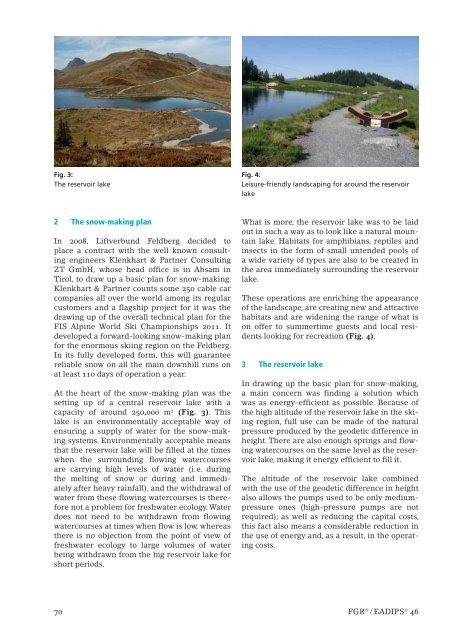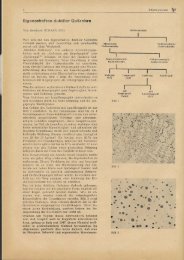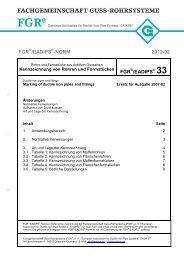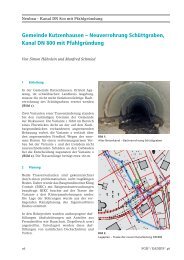Download PDF file
Download PDF file
Download PDF file
- TAGS
- download
- 81.169.135.155
You also want an ePaper? Increase the reach of your titles
YUMPU automatically turns print PDFs into web optimized ePapers that Google loves.
Fig. 3:<br />
The reservoir lake<br />
2 The snow-making plan<br />
In 2008, Liftverbund Feldberg decided to<br />
place a contract with the well known consulting<br />
engineers Klenkhart & Partner Consulting<br />
ZT GmbH, whose head office is in Absam in<br />
Tirol, to draw up a basic plan for snow-making.<br />
Klenkhart & Partner counts some 250 cable car<br />
companies all over the world among its regular<br />
customers and a flagship project for it was the<br />
drawing up of the overall technical plan for the<br />
FIS Alpine World Ski Championships 2011. It<br />
developed a forward-looking snow-making plan<br />
for the enormous skiing region on the Feldberg.<br />
In its fully developed form, this will guarantee<br />
reliable snow on all the main downhill runs on<br />
at least 110 days of operation a year.<br />
At the heart of the snow-making plan was the<br />
setting up of a central reservoir lake with a<br />
capacity of around 250,000 m 3 (Fig. 3). This<br />
lake is an environmentally acceptable way of<br />
ensuring a supply of water for the snow-making<br />
systems. Environmentally acceptable means<br />
that the reservoir lake will be filled at the times<br />
when the surrounding flowing watercourses<br />
are carrying high levels of water (i. e. during<br />
the melting of snow or during and immediately<br />
after heavy rainfall), and the withdrawal of<br />
water from these flowing watercourses is therefore<br />
not a problem for freshwater ecology. Water<br />
does not need to be withdrawn from flowing<br />
watercourses at times when flow is low, whereas<br />
there is no objection from the point of view of<br />
freshwater ecology to large volumes of water<br />
being withdrawn from the big reservoir lake for<br />
short periods.<br />
70<br />
Fig. 4:<br />
Leisure-friendly landscaping for around the reservoir<br />
lake<br />
What is more, the reservoir lake was to be laid<br />
out in such a way as to look like a natural mountain<br />
lake. Habitats for amphibians, reptiles and<br />
insects in the form of small untended pools of<br />
a wide variety of types are also to be created in<br />
the area immediately surrounding the reservoir<br />
lake.<br />
These operations are enriching the appearance<br />
of the landscape, are creating new and attractive<br />
habitats and are widening the range of what is<br />
on offer to summertime guests and local residents<br />
looking for recreation (Fig. 4).<br />
3 The reservoir lake<br />
In drawing up the basic plan for snow-making,<br />
a main concern was finding a solution which<br />
was as energy-efficient as possible. Because of<br />
the high altitude of the reservoir lake in the skiing<br />
region, full use can be made of the natural<br />
pressure produced by the geodetic difference in<br />
height. There are also enough springs and flowing<br />
watercourses on the same level as the reservoir<br />
lake, making it energy efficient to fill it.<br />
The altitude of the reservoir lake combined<br />
with the use of the geodetic difference in height<br />
also allows the pumps used to be only mediumpressure<br />
ones (high-pressure pumps are not<br />
required); as well as reducing the capital costs,<br />
this fact also means a considerable reduction in<br />
the use of energy and, as a result, in the operating<br />
costs.<br />
FGR® / EADIPS® 46
















